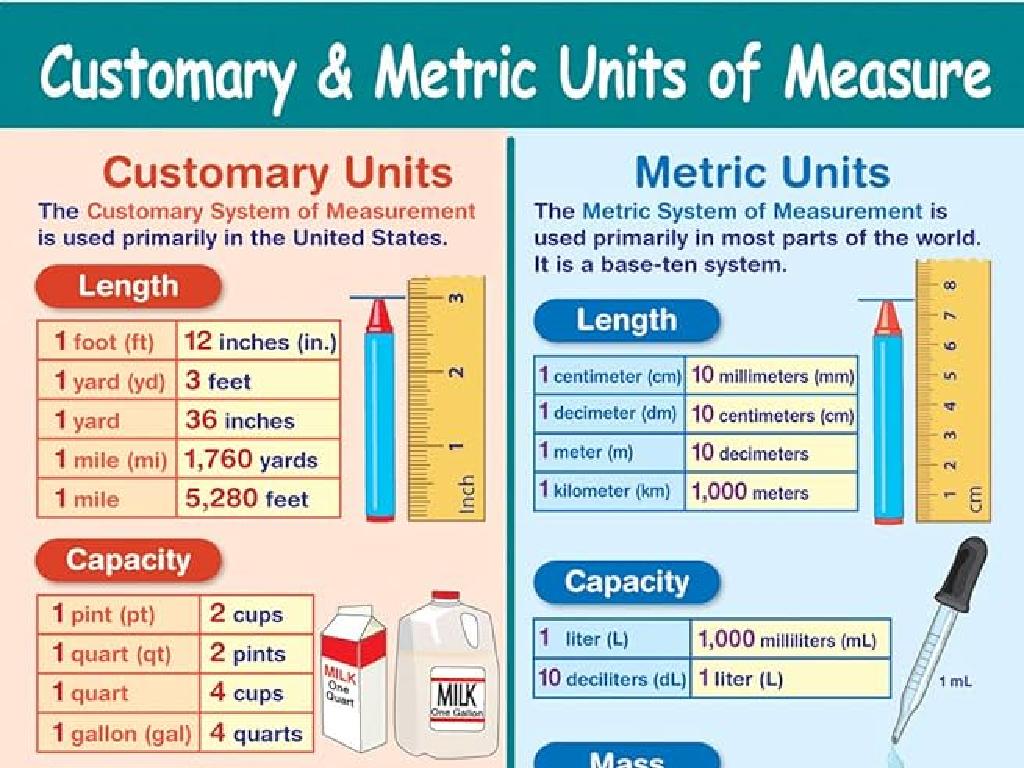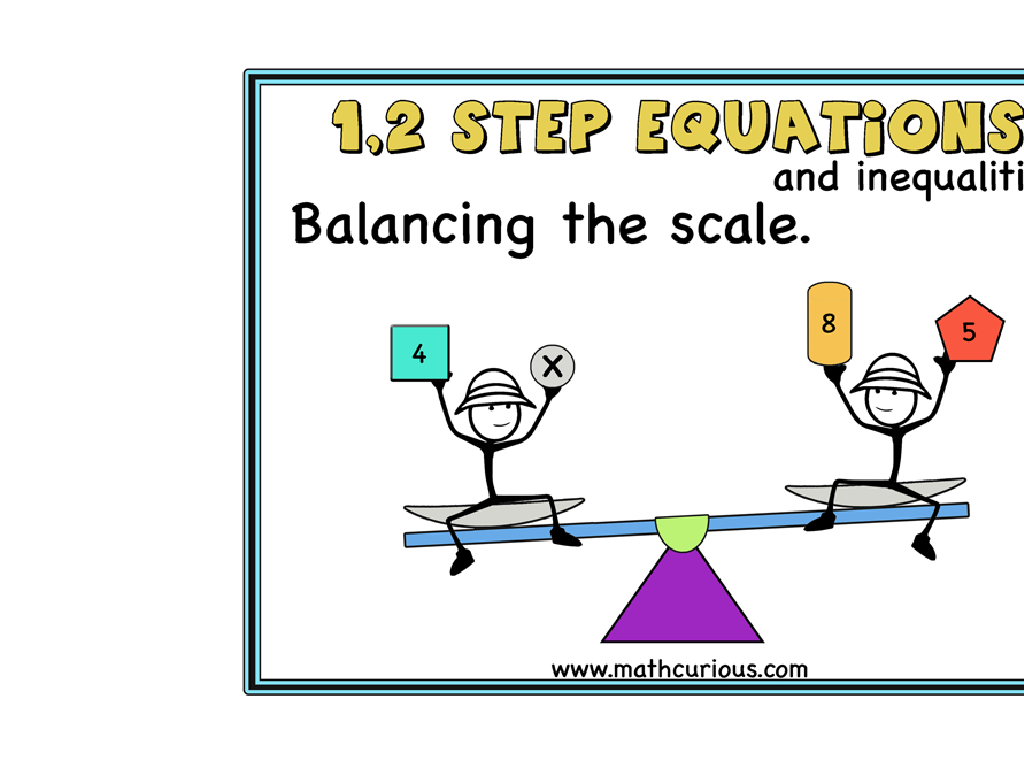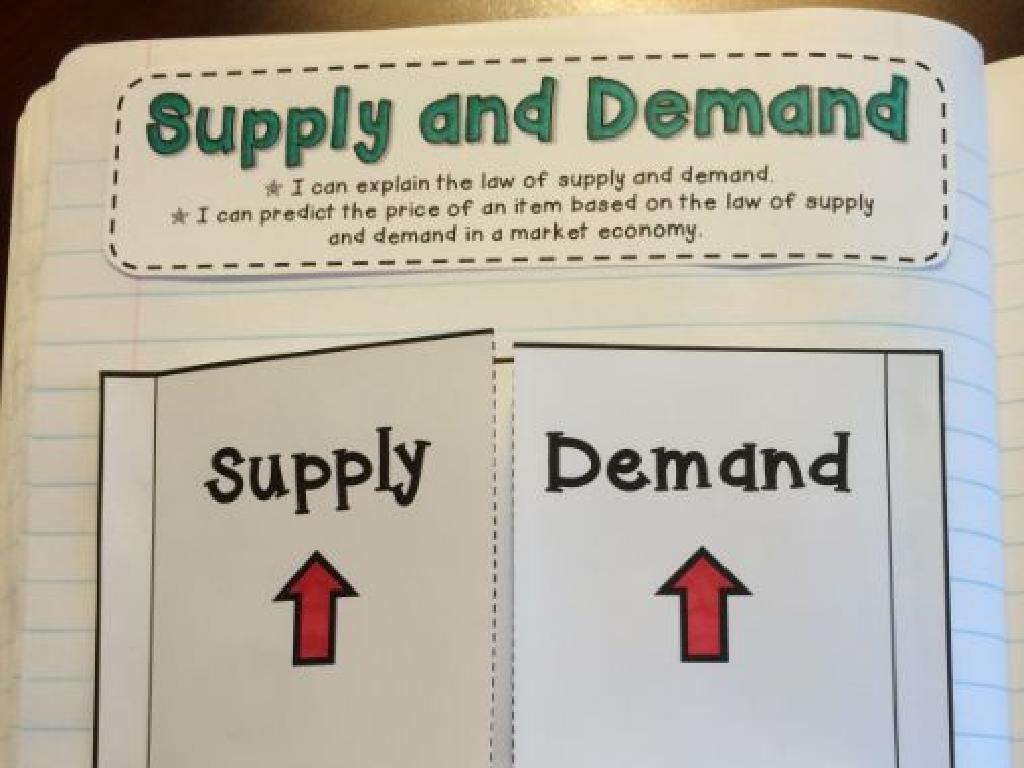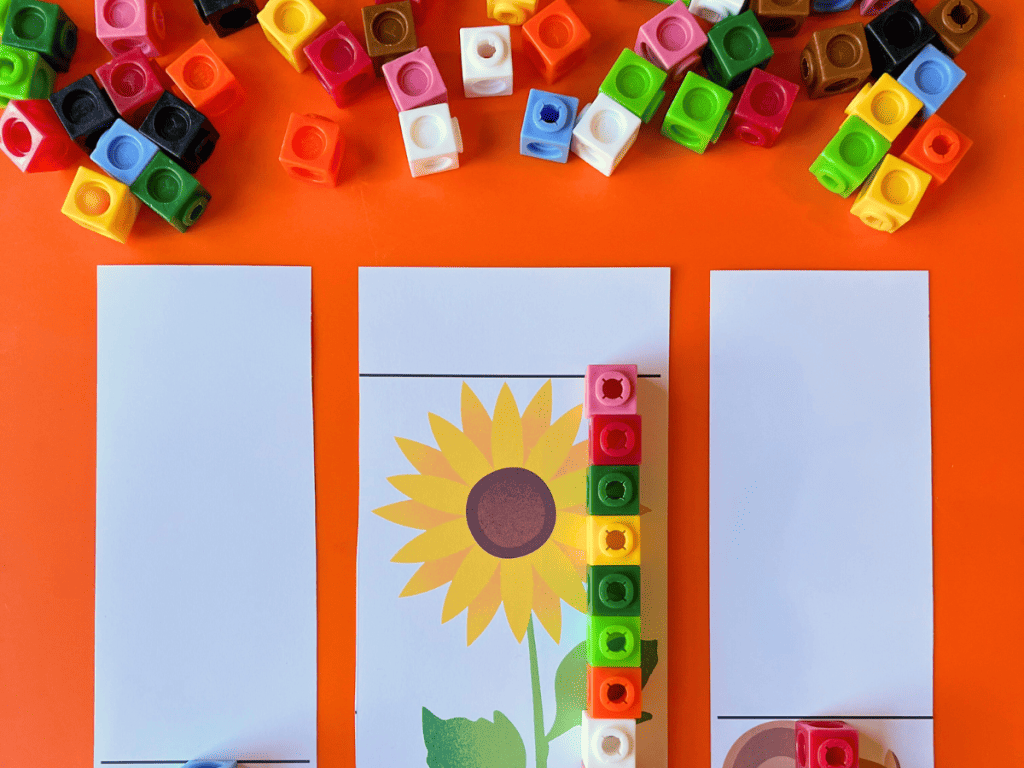Read Clocks And Write Times
Subject: Math
Grade: First grade
Topic: Time
Please LOG IN to download the presentation. Access is available to registered users only.
View More Content
Welcome to Telling Time!
– Greetings and introduction
– Today’s topic: clocks and time
– Importance of understanding time
– Knowing time helps us schedule our day
– Exciting activities ahead
– We’ll practice reading clocks and writing times
|
Begin the class with a warm greeting to set a positive tone. Introduce the concept of time, emphasizing its importance in everyday life, such as knowing when to wake up, when to go to school, and when it’s lunchtime. Explain that understanding how to read clocks is a skill that will help them be punctual and responsible. Get the students excited by mentioning that they will be engaging in fun activities to practice telling time. These activities will include hands-on practice with clock faces, interactive games, and worksheets where they will draw the hands on clocks to match specific times and write times for given clock faces.
Parts of a Clock
– Clocks have numbers 1 to 12
– A long hand: minute hand
– Points to minutes, goes around every hour
– A short hand: hour hand
– Points to the hour, moves slower
– We use them to tell time
– Practice reading the hands on a clock
|
This slide introduces the basic components of an analog clock to first graders. Emphasize the clock face with numbers 1 through 12, which represent the hours in a day. Explain that the long hand is called the minute hand, which moves around the clock once every hour and helps us read the minutes. The short hand is the hour hand, which moves from one number to the next as the day goes by, showing us the hour. Use a toy clock or a classroom clock to demonstrate how the hands move and how to tell time by looking at their positions. Encourage students to practice by setting the hands to different times and reading them aloud.
Understanding the Hour Hand
– Hour hand shows the hour
– The short hand tells us the hour
– It moves slowly, number to number
– Watch it go from 1 to 2 over time
– Points to 1 means 1 o’clock
– When it’s right on 1, we say it’s 1 o’clock!
|
This slide introduces the hour hand of a clock to first graders. Explain that the hour hand is the shorter hand on the clock and it tells us what the hour is. It moves very slowly; each time it passes a number, an hour has gone by. When the hour hand is pointing directly at a number, like 1, it means it’s exactly 1 o’clock. Use a toy clock or a drawing to show how the hour hand moves and ask students to observe the position of the hour hand at different times. You can also use real-life examples, such as lunchtime or the end of the school day, to help them relate to the concept.
Learning About the Minute Hand
– The minute hand counts minutes
– It’s the long hand on the clock
– It completes a circle every hour
– Watch it move from number to number
– Points to 12 means ‘o’clock’
– When it’s on 12, we start a new hour
|
This slide introduces the minute hand of a clock to first graders. Explain that the minute hand is the longer hand on the clock and it helps us know how many minutes have passed within an hour. It makes a full rotation around the clock, from one number to the next, and each number represents 5 minutes. When the minute hand points to 12, it’s the start of a new hour, and we say ‘o’clock’ like 1 o’clock, 2 o’clock, and so on. Use a toy clock or a classroom clock to demonstrate the movement of the minute hand and how it relates to the passing of time. Allow students to practice setting the minute hand to different times and saying the time out loud.
Reading the Clock
– Look at both clock hands
– Find where the hour hand points
– If the hour hand is between numbers, it’s the earlier hour
– Count by fives for minute hand
– Each number the minute hand points to counts as 5 minutes
– Write down the time
|
This slide introduces students to the basics of reading an analog clock. Start by explaining the two different hands on the clock: the shorter ‘hour hand’ and the longer ‘minute hand.’ Teach the students that the position of the hour hand indicates the hour part of the time. If the hour hand is between two numbers, the earlier number is the current hour. Next, explain that the minute hand’s position is counted in increments of five to determine the minutes past the hour. Practice with the students by pointing to different numbers on a sample clock and asking them to count by fives to read the minutes. Finally, have the students practice writing down the time they read from the clock. You can use real clocks or paper clocks for hands-on practice.
Practice Time: Reading Clocks
– Observe the hour hand position
– Check the minute hand next
– Write down the time you see
– Use the numbers the hands point to
– Share your answers with the class
– Practice makes perfect!
|
This slide is designed for a class activity where students will practice reading times from clocks. Start by reminding them to always look at the hour hand first, which is the shorter hand, to determine the hour. Then, they should look at the minute hand, the longer hand, to figure out the minutes. Have several clocks with different times for the students to practice with. Encourage them to write down the time as they interpret it from the clock. Afterward, they can share their answers with the class to confirm if they got it right. This will help reinforce their understanding of reading analog clocks. Possible activities include matching digital times to analog clocks, drawing hands on a clock face to match a given time, and using personal mini-clocks to set and share times with peers.
Writing Times on the Clock
– Learn to write the time
– Hour first, then minutes
The big hand shows minutes, small hand shows the hour
– Use a colon between
– Example: 3:00 is 3 o’clock
When the big hand is on 12, we write :00
|
This slide is aimed at teaching first graders how to write down the time they see on a clock. Emphasize that the hour is written first, followed by a colon, and then the minutes. Use simple examples like 3:00 to illustrate that when the big hand is pointing at the 12, it means ‘o’clock’ and we write :00 for the minutes. Encourage students to practice with different hours, and ensure they understand the placement of the hour and minute hands on the clock. Prepare to have several clocks available for practice, and consider interactive activities where students can set the clock to a specific time and then write it down.
Activity Time: Make Your Own Clock!
– Create a paper clock together
– Use the clock to display times
– Practice reading times aloud
– For example, show 3 o’clock and say ‘It’s three o’clock!’
– Write down the times we show
– After showing a time, write it as ‘3:00’
|
This activity is designed to help first graders understand the concept of time by creating their own paper clocks. Teachers should prepare clock templates with movable hour and minute hands. Students will then use these clocks to set specific times as instructed by the teacher. Encourage the students to practice saying the times out loud to reinforce their learning. After setting a time on their clocks, students should write down the time, helping them associate the position of the hands with the numerical time representation. Possible variations of the activity could include setting the clock to the time of school events, such as lunchtime, or to the students’ bedtime, to make the activity relatable.
Congratulations on Learning Time!
– Proud of your time-reading skills
– Practice is key to perfection
– Continue with paper clocks at home
– Use your paper clocks to practice setting and reading different times.
– Keep growing your time-telling abilities
|
This slide is meant to congratulate the students on their progress in learning how to read and write times. It’s important to encourage them to keep practicing, as repetition will help solidify their understanding. Remind them to use their paper clocks at home to continue practicing. This can be done by setting the clock to specific times or trying to read the time it shows. Encourage parents to participate in this learning activity by asking their children what time it is throughout the day. This will help students apply their skills in real-life situations and recognize the importance of time-telling in their daily routines.






